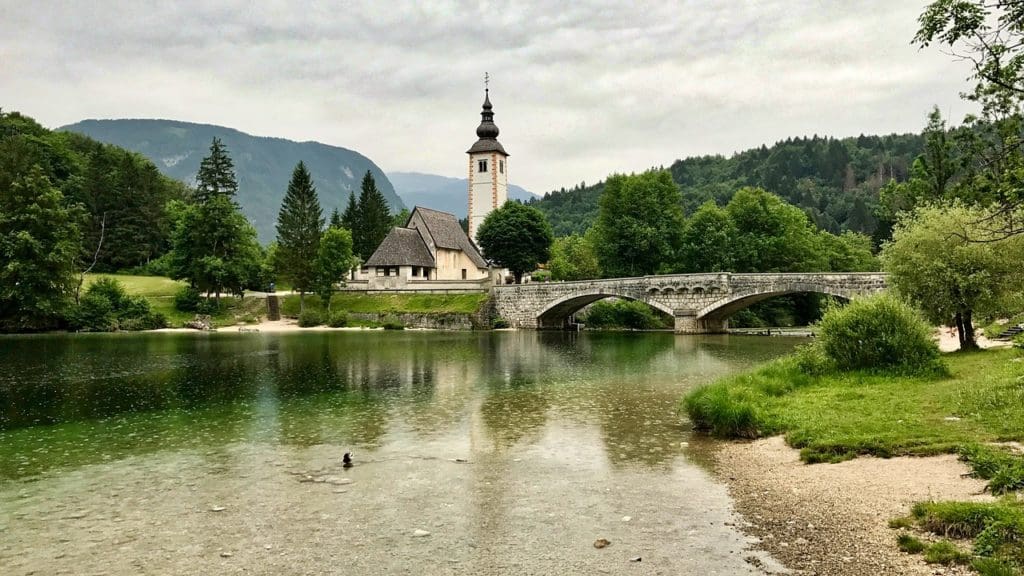
Slovenia is a compact country that packs a ton of charm, interest, and history into its borders. Its lovely scenery includes mountains, lakes, vineyards, and Adriatic beaches, making it perfect for outdoor endeavors. The culture and food are influenced by its neighbors Austria and Italy, as well as historic domination by the Greeks, Romans, and medieval Germans. Having been inhabited since 2500 BC, but only independent since 1991, Slovenia is both traditional and modern. It has fewer visitors than the more touristed countries nearby, yet is easy to travel around, making the country one of Europe’s best-kept secrets.
Ljubljana
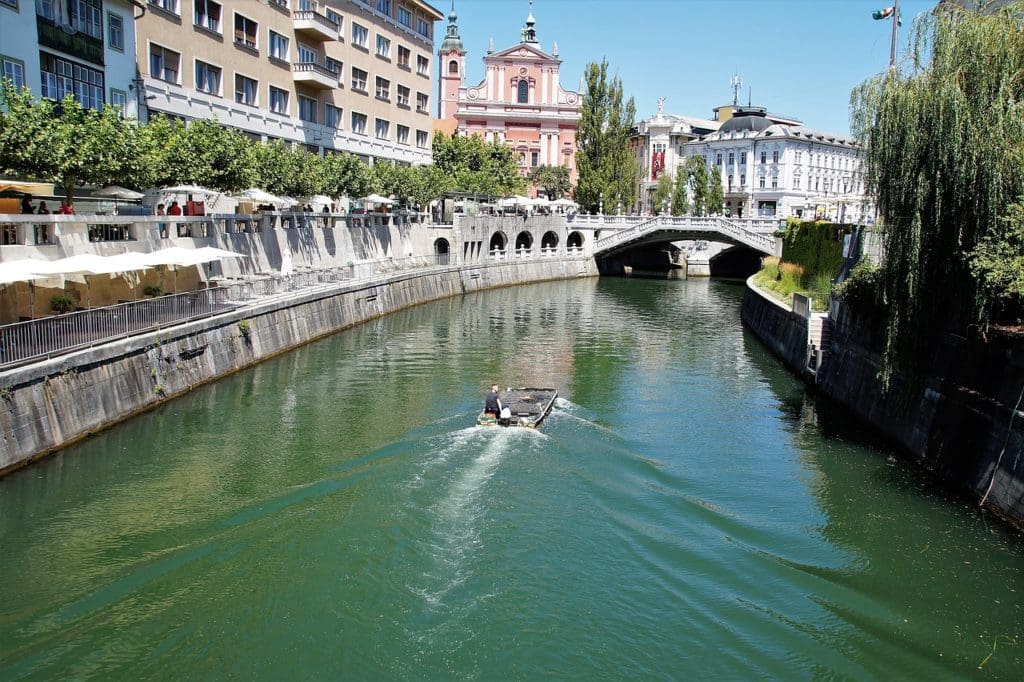
Whether you fly directly into the capital city of Ljubljana (pronounced loo-blan-ha) or drive less than two hours from Italy or Austria, start your discovery of Slovenia by taking in one of Europe’s greenest cities. You can easily explore the curving cobblestones streets of Ljubljana’s old town on foot, which allows you to browse the many small boutiques and galleries, admire quirky street art, or take a break at any of the riverfront cafes or wine bars.
Casting its shadow over old town is the Ljubljana Castle, one of the best-preserved medieval castles in Europe. You reach it by a 10-minute hike. For a taste of contemporary life, visit the Central Market selling meats, vegetables, and more. Travel Maestro tip: Try a burek (flaky meat or cheese pastry) for an inexpensive lunch or snack.
Cross the river that divides the city to stroll the main shopping streets of art-nouveau buildings. Slovenia’s native son, architect Jože Plečnik, designed the Triple Bridge, as well as the Central Market, National Library, parks, and plazas in Ljubljana, making a lasting impact on the city’s style, much like Gaudi in Barcelona. The Franciscan Church and the baroque town hall with a huge fountain are also worth seeing, as are the ultramodern cultural center Cankarjev dom, and the neo-rococo opera house. Travel Maestro tip: Be on the lookout for the city’s many signature dragons.
Lake Bled
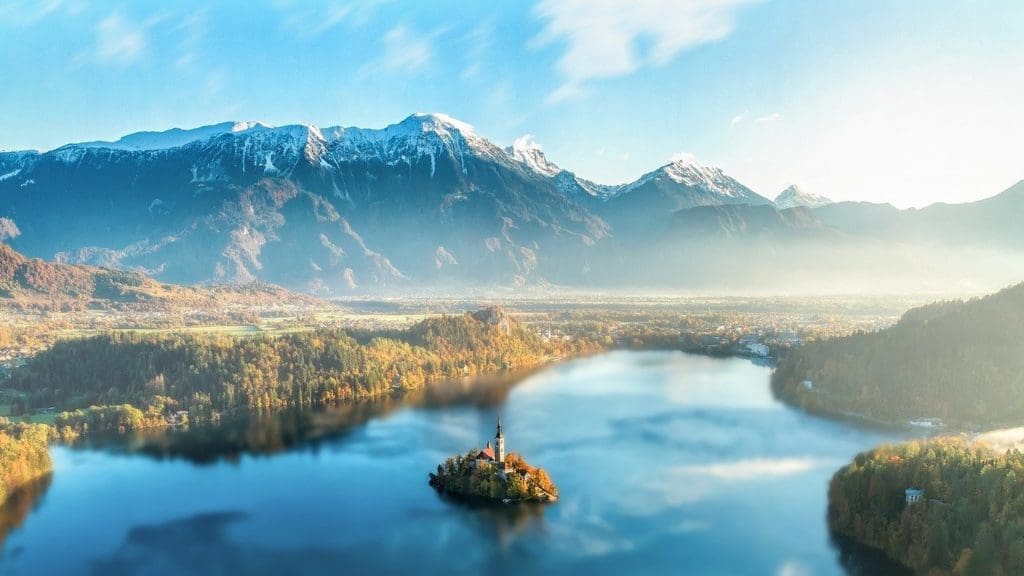
A mere 45-minute drive from Ljubljana takes you to the picturesque alpine village of Bled, the country’s most visited attraction for the last century. The idyllic setting is the stuff of fairytales – against the backdrop of snowcapped Alps, an old castle overlooks a deep blue lake nestled in the valley below. In the middle of the lake sits a tiny island only big enough for an ancient church, the white tower, and red-tiled roof appearing above the woods around it.
You can tour Bled Castle which features a museum, chapel, old printing press exhibition, herb gallery, wine cellar, and a restaurant with a superb view. Next, rent a boat to row out to the island or hire a gondolier to take you. There is a beautiful walking trail around the island that takes about two hours, or a sightseeing train runs in good weather. Travel Maestro tip: Legend says that if you ring the bell in the church, your wishes will be granted.
Triglav National Park
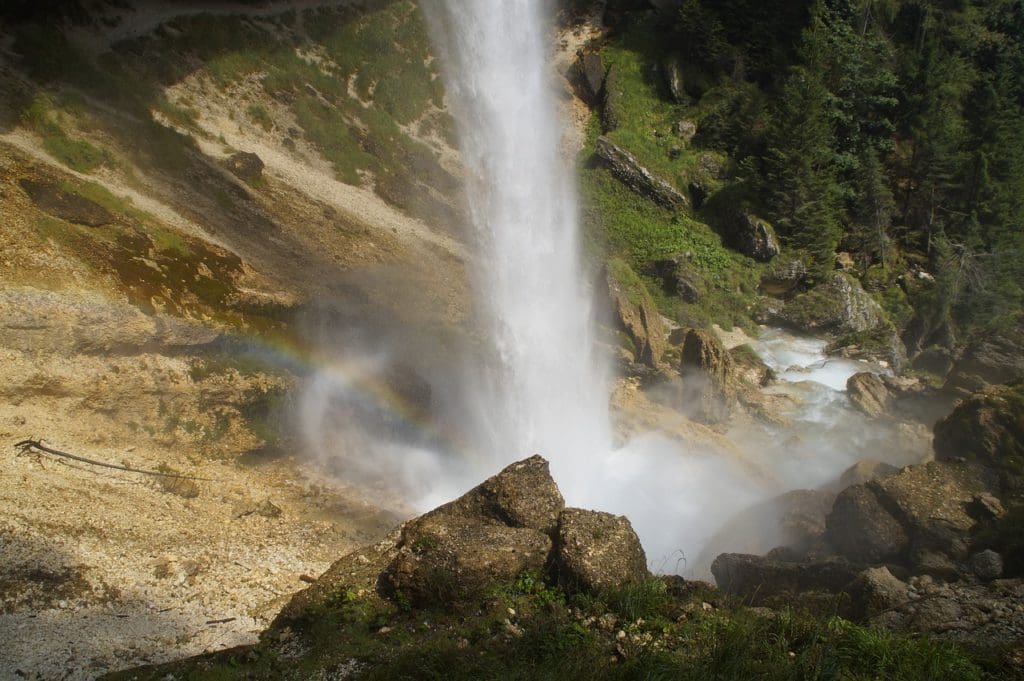
The Triglav National Park in the northwest of Slovenia comprises over four percent of the entire country. The park is an endless resource for outdoor adventure, from rock climbing to biking to rafting to hiking. Located in the Julian Alps, you’ll find gorges and waterfalls, alpine forest and meadows, as well as Mount Triglav, the highest point in Slovenia. Travel Maestro tip: Outdoor enthusiast will want to spend two days in the area, three if you plan to summit Mount Triglav.
Soča Valley
At the western end of the park, near the Italian border, is the mountain town of Bovec and the Soča Valley, the first Slovenian destination to earn the title of European Destination of Excellence for its sustainable tourism practices. In the winter, downhill and cross-country skiing is popular, and in the summer nature lovers can hang-glide, canyon hike, and river raft. World War I history buff should visit the museum and several memorials in Kobarid. Travel Maestro tip: Some of the best restaurants in the country are in Kobarid.
Caves and Karst
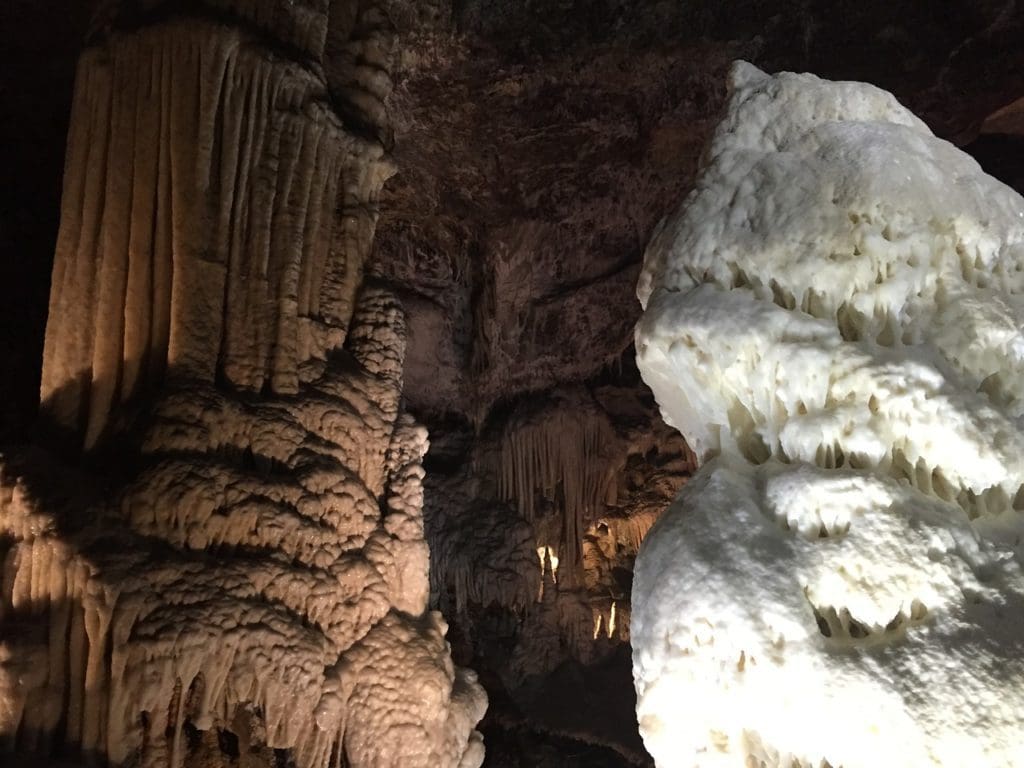
Continuing from the Soča Valley, you enter the Karst region. Much of Slovenia rests on a bed of limestone, so there are thousands of caves across the country. The Skocjan Caves are designated as a UNESCO World Heritage Site because it is believed they have been used by humans since the Iron Age. The Postojna Caves are one of the largest cave systems in the world. They are filled with impressive rock formations, huge chambers, and impressive grottoes. The Postojna Cave also has the distinction of having an electric train that takes visitors on an hour-long tour.
As we head toward the Adriatic, dozens of vineyards and wineries dot the landscape. Slovenia’s viticulture dates to the 5th and 4th centuries BC, long before the Roman influence. There are three major wine-growing regions and more than 28,000 wineries across Slovenia. Travel Maestro tip: Be sure to taste the distinctive Teran style of dark red wine that the Karst region produces.
Lipica and the Slovene Riviera
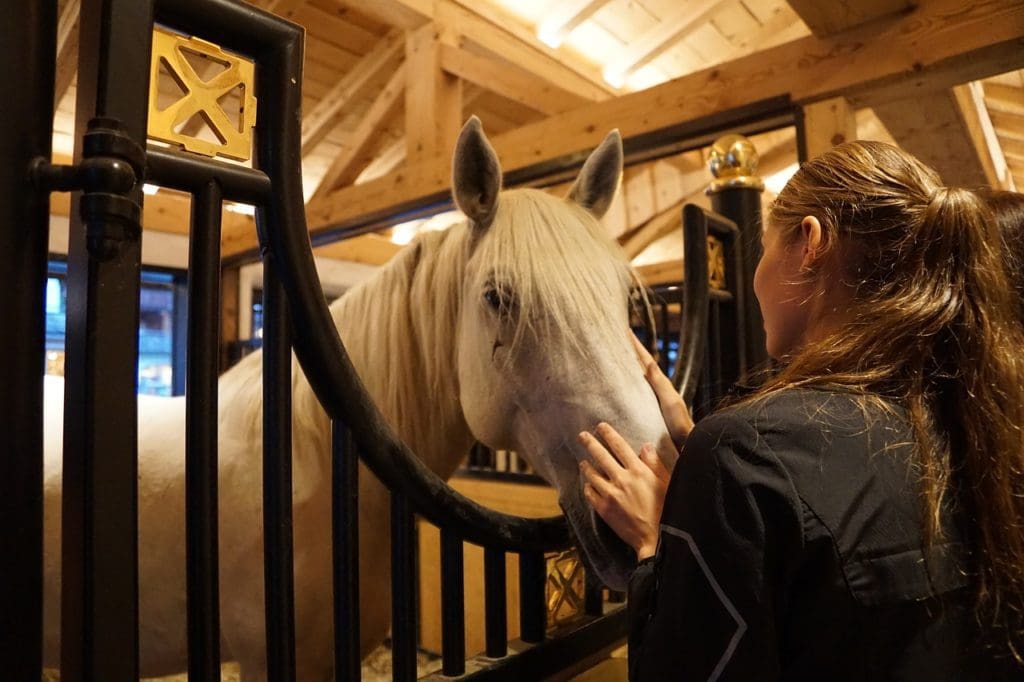
Just minutes from the Italian border, you’ll find the 400-year-old farm of Lipica, Slovenia, a stud farm for the world-famous Lipizzaner horses. Don’t miss visiting the stables and the riding school, then take a tour of the countryside in an antique horse-drawn coach. Travel Maestro tip: During the summer you can catch a Lipizzaner performance several times a week.
Slovenia only claims 29 miles of Adriatic coastline, but they make every foot of the Slovene Riviera count. Koper is a port city with many cultural monuments. Izola is an old fishing town that features train and model ship museums, along with old Mediterranean architecture and many art galleries. Portoroz (The Port of Roses) with its five-star Grand Hotel Palace Grand Casino Portoroz is quite the fashionable resort town that makes a good base for the area. And finally, jutting out into the Adriatic, Piran shows the architectural influence of the Venetians, with the parish church being a copy of St. Mark’s – and it can get just as crowded as Venice in the summer. Travel Maestro tip: Unwind with a sauna, thermal bath, and wellness treatments at the Grand Hotel Palace in Portoroz.

Visiting Slovenia
Slovenia is a wonderful destination for those who have already been to Europe once or twice and want to get off the beaten path. The scenery is splendid and one big playground for outdoor enthusiasts. Should you think this itinerary of Slovenia highlights is too much to cover in one trip, keep in mind that the total driving time is only about seven hours. Slovenia is slightly smaller than the state of New Jersey. You can choose your highlights and easily make this a five- to seven-day itinerary. When you’re ready to visit Slovenia, contact your Covington advisor for help planning your vacation.






Leave a Reply